I have to admit to not getting too excited reviewing cables; not only do you convince some readers who believe that all cables 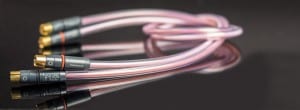 sound the same, but conversely I have to make every effort to ensure that when I do review something, it’s not the footprint of the hardware itself that’s actually making all the difference. I have therefore, over the years, put together different hi-fi set ups that I know to be honest purveyors of the original sources that I have mixed myself in the studio or know really well. It is also essential to make sure an over-biased eccentricity created in one wire is not compensated for in another wire along the chain. Therefore, I have my cable favourites and pet hates. Careful placement and material is vital in establishing my audio paradise. Over the years I have ascertained the bland and dull, and similarly discovered the bright and thin. So much depends on the metal, the amount of oxygen in it, the dielectric, and the casting process (called extrusion and annealing) from the master raw material. For example, Silver is the most conductive metal above copper, but it has the tendency to sound bright and thin, which initially can make the music sound more compelling. Whilst that might sound great for bland sources, or those of us who have top end frequency deficiency, what is really needed is an absolutely flat cable that takes nothing away nor adds anything. It must not act like a capacitor or resistor, nor like an aerial and add RFIs. Max Townshend has spent his life trying not to add anything to the music (in his passive autotransformer preamplifiers), and to dampen everything else that tries to get in (with his Troughs, Paddles, Seismic Sinks and Isolation Feet, etc).
sound the same, but conversely I have to make every effort to ensure that when I do review something, it’s not the footprint of the hardware itself that’s actually making all the difference. I have therefore, over the years, put together different hi-fi set ups that I know to be honest purveyors of the original sources that I have mixed myself in the studio or know really well. It is also essential to make sure an over-biased eccentricity created in one wire is not compensated for in another wire along the chain. Therefore, I have my cable favourites and pet hates. Careful placement and material is vital in establishing my audio paradise. Over the years I have ascertained the bland and dull, and similarly discovered the bright and thin. So much depends on the metal, the amount of oxygen in it, the dielectric, and the casting process (called extrusion and annealing) from the master raw material. For example, Silver is the most conductive metal above copper, but it has the tendency to sound bright and thin, which initially can make the music sound more compelling. Whilst that might sound great for bland sources, or those of us who have top end frequency deficiency, what is really needed is an absolutely flat cable that takes nothing away nor adds anything. It must not act like a capacitor or resistor, nor like an aerial and add RFIs. Max Townshend has spent his life trying not to add anything to the music (in his passive autotransformer preamplifiers), and to dampen everything else that tries to get in (with his Troughs, Paddles, Seismic Sinks and Isolation Feet, etc).
So, to be given a cable that has both wires as close together as humanly possible was for me the last thing I wanted to see, and something, to be honest I didn’t expect Max to do. This new cable from Townshend Audio is as radical a move as was his excellent 2002 DCT300 interconnect with its metal sheet conductors side by side in their own PTFE air tubes. This design ensured that 99% of the cable had air as its dielectric. The new F1 uses Townshend’s latest incarnation of enhanced DCT (Deep Cryogenic Treatment), better known as ‘Fractal-wire’, hence the letter ‘F’, and which he guards in strict secrecy, having learnt a lesson from his original DCT technique which is now copied around the world. Indeed, Fractal wire is also used in the windings of his Allegri autotransformer passive preamplifier. The F1, like its precursor, ensures the cable has an absolute minimum contact with the insulator. Indeed, the thin and thick layers of PVC or PTFE dielectrics in 99.9% of cables can add their own distinctive colouration and microphony. Think of the common capacitor as two pieces of metal held apart by some non-conductive material (dielectric), and you’ll see how much your interconnect resembles this major electrical component. Wire Resistance in cables is fairly insignificant, and general 12 gauge house wiring, being around 0.016 ohms per foot, is sometimes used as a cheap alternative, though this misses out other major ‘parts’ that make a cable and therefore far greater affect the sound. Having heard so many cables at all price points I can even, more than occasionally, recognise manufacture, metals and dielectric blindfold simply by listening. The differences can be so big that at times the cables can make a bigger difference than comparing different source. Hence, auditioning cables tends to be much easier to do than pieces of Hi-Fi, but that means you really need to know your sources, and full implications of mixing components and cables. For example, silver can work better on valve than transistor.
Unfortunately many feel that spending a significant amount on cable is a waste of money. And if the dielectric is quite simply air, that payment in the shop or on-line can be even more painful. The choice of dielectric is, however, as important as the metal itself. Indeed, one of the best dielectrics to use is air, and I recall writing in HiFi News about Abbey Road Cables doing a similar stunt a few years back, using wiring held in place with grommets in air-filled tubing. In Max’s cable the signal travels through a singular very thin polyester-coated enamelled copper wire, which spirals around a much thicker bare copper ground wire. Because signal and return conductors are so tightly spaced, external electric fields cannot get in. As a result, these cables block radio frequency interference (RFI) and help to stop hum in valve amplifiers. The cable reminds me of Litz cable (incidentally, this is used in their Super Tweeter cabling). Each thin strand in Litz cable has its own enamelled coating, and relies on the skin factor, whereby the majority and faster electrons vibrate at the edge of the cable. In a good conductor, skin depth varies as the inverse square root of the conductivity. This means that better conductors have a reduced skin depth. Therefore there is no need for ‘thicker’ wire – something perhaps more favourable to the wallet-fearing customer.
I remember my A-level Physics talking about energy and electric field in relationship to AC (and therefore audio) flowing in a wire. It tells us that the electric field vanishes inside a conductor, in other words no energy flows inside a conductor but actually just outside. Therefore, the speed of a signal depends on the dielectric properties of the insulation. The best dielectric allows flow of “the signal” at around 70% speed of light. In Townshend F1 the signal conductors only come into contact occasionally with the inner of the two concentric PTFE tubes. Most of that dielectric is air, as I mentioned earlier. The PTFE tubes are in turn placed inside a third, and clear, PVC outer cable. Such a clever and simple idea. In many cables, linen or cotton can be used to dampen the wire movement inside that cable from vibrations. With the F1, if vibrations appear in the outer layer of PVC, the air dampens it from the next two PTFE tubes. Brilliant. The fact that the two cables are so close together means this is not likely to be a problem. The whole is terminated in the industry best Neutrik Profi RCA phono plugs which have a spring loaded ground collar. There is also a balanced version, which incorporates two strands of the ultra-fine enameled copper conductor spiraled together with a parallel drain wire but no shielding, and again terminated with Neutrik XLR plugs.
I played lots of different music using a selection of sources, both valve and transistor. I particularly wanted to check three areas; 1) depth of frequency range, 2) dynamic range, and 3) how complex sound structures were conveyed from source to amplifier. The first area passed with flowing colours, from lowest bass thumps in ‘Sister Drum’ by Dadawa, to the cymbals in 1970’s LP ‘Feel the Love’ by Love Song was the best I have ever heard. The skin factor, which can limit high frequencies would be off the scale, so no problem there. Dynamic range was not an issue in even the most complex tracks I played; whether Nono, Neillson, Mahler, Sibelius or Britten, or Tangalgo’s energetic ‘La Zucca Barucca’. The complex orchestration in The Pines of Rome, Respighi, (Chicago Symphony Orchestra) was unflustered. This cable could do it all, and with all types of music. Quite simply, this cable was so open, transparent and unflappable, uninfluenced by anything around it, that I was quite taken aback. Nothing added and nothing taken away. I could just concentrate on the music around me; not the cables and not the hi-Fi! The cable, itself, was just not there. It didn’t worry me that it wasn’t the most beautiful looking or the thickest. I actually didn’t want to see it, I just want to ‘see’ the sound in a 3D audio arena from two speakers. And I really could! It worked equally well with Wilson Benesch, B&W or Graham LS5/9s, and with vinyl or CD into transistor or valve amplifiers. My Krell KSS 20i CD is well known for bass emphasis, sometimes overstating the rest of the audio, but it didn’t mask or slow the rest of the frequencies. I have personally only found two other interconnects that don’t leave a musical signature – whether it be tonal or timing – this F1 was up on the top with them, and much faster than Lewis Hamilton. I rarely get excited about cables, and having initially expected these to not be anything special, going by the unique design, I have to admit I was wrong. These proved that thinking outside the box can actually be the most sensible thing to do. Something Max does every day.
Janine Elliot
Build quality 8.5
Sound quality 9.1
Value for money 8.7
Overall 8.77
I rarely get excited at interconnect, speaker or mains cables. There can be such differences in them. But to find one that just doesn’t leave any footprint and makes my music sound as real as it did in these test, is something I really want to shout out about. This is as good as it gets.
Price £899 for 1 to 2m Phono to phono and £949 for XLR.












































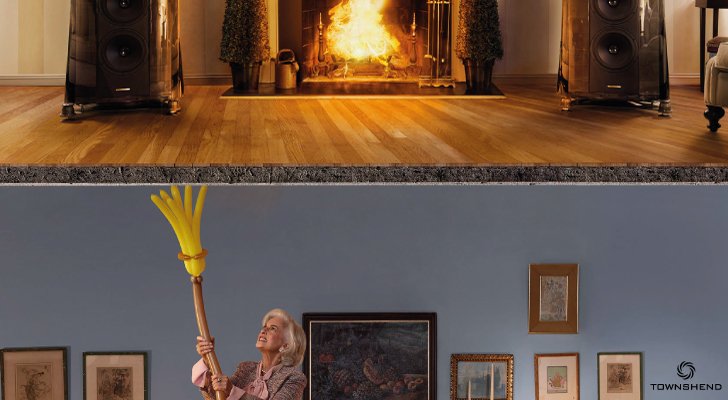














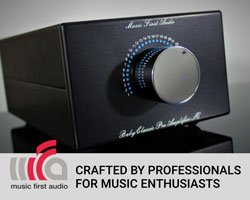












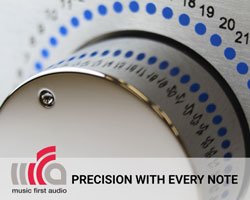


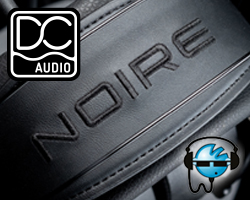





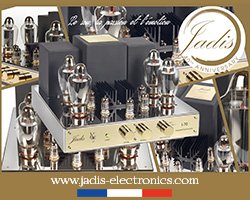
















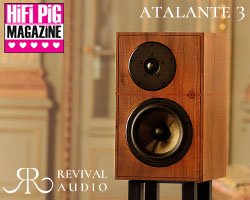


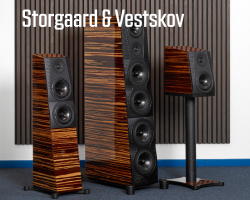


































































You must be logged in to leave a reply.